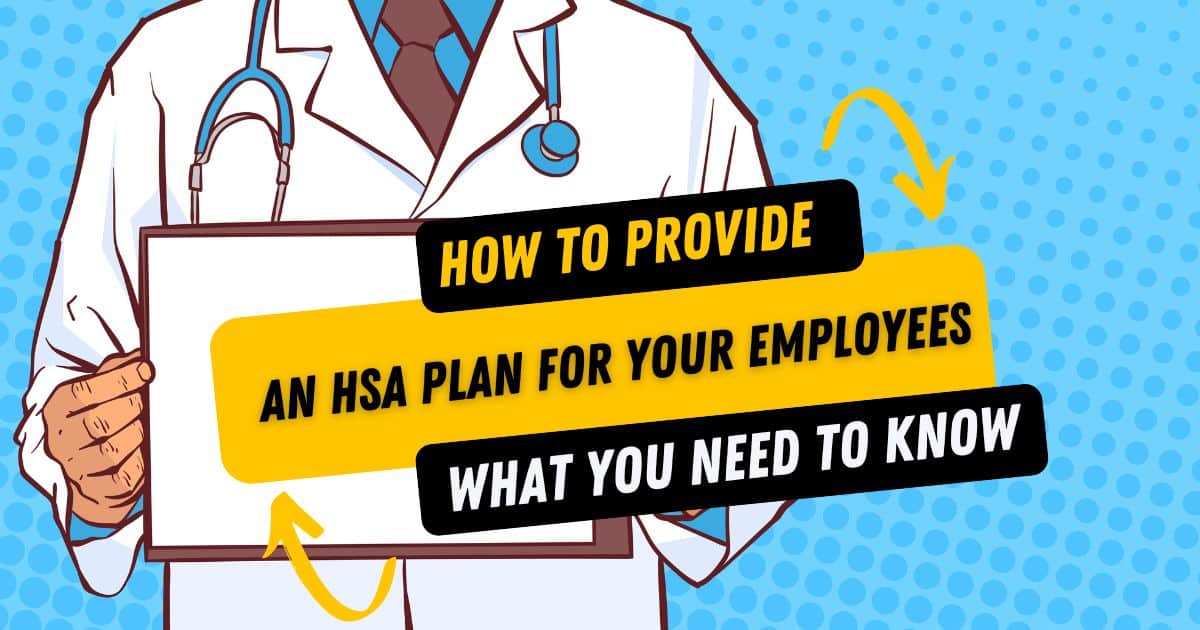

Small to mid-size employers are always looking for ways to offer their employees benefits while keeping costs under control. Health Savings Accounts (HSAs) are becoming an increasingly popular option for these employers. Why? They provide a flexible and cost-effective way to offer health insurance coverage. In this post, we’ll take a closer look at what HSAs are, who is eligible for an HSA plan, and the benefits of an HSA plan for both employers and employees.
A Health Savings Account (HSA) is a tax-advantaged savings account that is paired with a high-deductible health insurance plan (HDHP). An HDHP plan is a health insurance plan with lower premiums and higher deductibles compared to a traditional health insurance plan. An HDHP plan puts more of the healthcare costs back on the employee. When enrolled in an HSA plan coupled with an HDHP plan, the HSA funds can be used to pay for eligible medical expenses and are not subject to federal taxes. The balance rolls over from year to year, so employees can use their funds in the future if they have not yet reached their plan’s deductible. Health savings accounts are also portable meaning that an employee can take their contribution balances with them if they were to leave their current company.
Health savings accounts have an annual contribution limit that is broken into individual and family contribution limits. The individual contribution limit for 2023 is $3,850 while the family contribution limit for 2023 is $7,750. Typically, these contribution limits increase year over year to keep pace with the rising costs of healthcare and inflation. Employers can contribute to their employees’ HSA plans. The individual and family contribution limits do not change regardless of whether the employer contributes or not. Also, it is best practice to ensure that employers contribute the same amount to similar employees to avoid unintentional discrimination.
To be eligible for an HSA plan, an individual must be enrolled in a high-deductible health plan (HDHP). This means that the HDHP must have a minimum deductible of $1,500 for individual coverage or $3,000 for family coverage. Additionally, the HDHP must limit the maximum out-of-pocket expenses to $7,500 for individual coverage or $15,000 for family coverage. Again, it is important to note that a health savings account cannot be opened without the plan participant first enrolling in the HDHP plan.
Health savings accounts are not just beneficial for employees. Employers can take advantage of health savings accounts as well. The below outlines just a few ways that offering a health savings account can benefit employers:
Health savings plans are an amazing tool if used correctly. The below are a few of the top concerns that employers have for offering health savings accounts to their workforce:
Health Savings Accounts (HSAs) offer a cost-effective and flexible option for small to mid-size employers to provide their employees with a method to help offset medical expenses. They provide benefits for both employers and employees, including cost savings, increased flexibility, and tax advantages. However, employers may have concerns about administrative costs, confusion among employees, and lack of awareness of the HSA concept. Overall, HSAs can be a valuable benefit for both employers and employees, and it's important to carefully consider the pros and cons before implementing an HSA plan.
Did you know that Whirks can handle all of your Benefit needs for you? Not only can Whirks offer the best insurance plans for your organization, but we can also take the day-to-day Benefits administration burdens off your plate!